This is a period when Egypt became stronger in all aspects of civilization and transformed into an organized state. The ruler’s power is based on the form of government ruler’s God. Such autocracy has eventually led to the disintegration of the old state at the end of the Old Kingdom. The reputation of the town Thinis fell down together with the Thinis dynasty. Priest life and worship has been moved to Abydos together with the tomb of Osiris, and the Memphis has become the capital. During the III. and IV. dynasty of the monarchy has evolved absolute power, and later the nobility and Heliopolis priesthood has strengthened so due to it came internal problems (rebellion of the population) and the intrusions from the outside that weakened the kingdom.
THIRD DYNASTY (2.686 – 2.613 BC)
The capital is moved to north where the city Memphis has been developed.
Nebka (2686. – 2667.) In Kings Lists in Abydos Nebka is at the same level with Djoser.
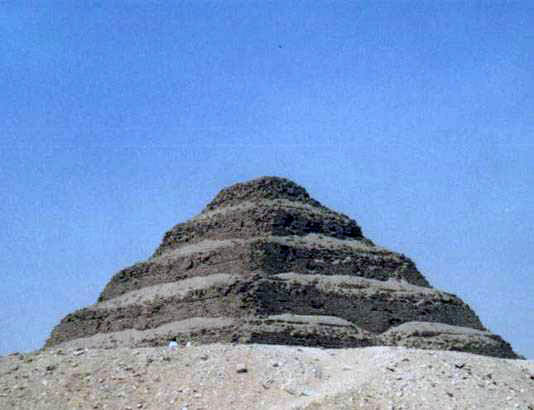


Djoser (Zoser) (2.667 – 2.648)
In the Twelfth Dynasty, the name Djoser appears. At that time, the statue of pharaoh Djoser was built. Djoser means ‘the one who is holy’. He had several names that were Netjerykhet, Tosorthros, and Nebka.
It is possible that he organized military campaign on to Sinai where an inscription with his name was found. He had also fought Libyans during his reign. On the other inscription, it was mentioned seven years of hunger, and this story has mythological connotation so it is possible that the Khnum’s priest wrote it in the Ptolemaic age.
During his reign, he saved people by giving sacrifice to the God Khnum. Generally, historians believed that during his reign Egypt has grown into a strong state. They believed that he built the temple in Heliopolis but no remains of the temple were found. His most important legacy is certainly a pyramid the first building in ancient Egypt which is made entirely of stone and whose architect was Imhotep.
Pyramid is located within the complex, together with the post-mortal temple, also with structures that were dedicated to Djoser’s thirtieth reign and with cenotaph (“Southern grave”). In the post-mortal temple was discovered Djoser’s statue (the statue stood in its serdab).
Djoser (Sekhemet) (2.648 – 2.640)
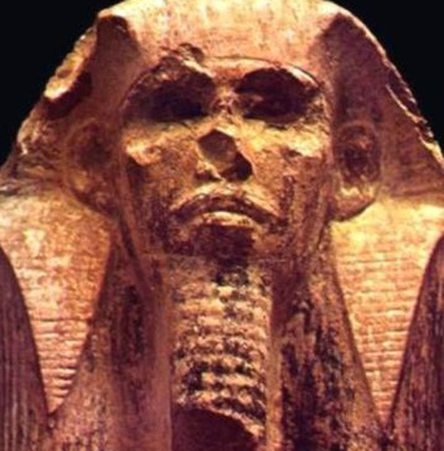


The successor Djoser on the inscriptions from that period is mentioned as Sekhemhet. He led an expedition that visited mines in the Sinai Peninsula. His unfinished pyramid was discovered at Saqqara, and probably an Imhotep built it. Egyptologist Zakaria Ghoneim discovered this pyramid. He expected sensational discoveries. On 26.06.1954, he invited the public to the opening of the sarcophagus of Pharaoh. When sarcophagi turn out to be empty the public was disappointed and soon after that Goneim died under unexplained circumstances. It is believed that he had committed suicide.
Other pharaohs of the Second Dynasty were (Manetho: Boetos, Kaiehos, Binotris, Tlas, Sethenes, Haires, Neferheres, Sesohris, Heneres. Many authors quote Manetho in the absence of other sources, but no one mentioned those names in the king’s lists.):
Khaba (2.640 – 2.637)
– his pyramid is probably in Zawiet el Arjanu (Layer Pyramid)
Sanakhte
Huni (2.637 – 2.613)
– probably started building construction of the step pyramid out of limestone in Meidum.
Historians discovered four pyramids on the territory from Faiyum to El Kaba. They believed that they might be attributed to the unknown parts of the Third Dynasty.
FOURTH DYNASTY (2.631 – 2.494)
Sneferu (2.613 – 2.589)
The first ruler of the dynasty, inherit its power by marring his half-sister Hetepheres (Huni’s daughter) who was the real heir to the throne. He built three pyramids. Those built in Dashur were called ”Red pyramid” and ”Bent pyramid”; while third pyramid is located in Meidum. He was waging the war in the Sinai (copper), against the Bedouins, Nubians, and Libya. During his lifetime, he was already been worshiped as a divine, a papyrus Westkar – from the reign of Hyksos and Noferti advices – Noferti was a prophet in the Sneferu’s time. Peopleworshiped him as a fair ruler. In the “Red pyramid” was discovereda male mummy for which it is believed that it belonged to Sneferu.
Khufu (gr. Cheops) (2.589 – 2.566)
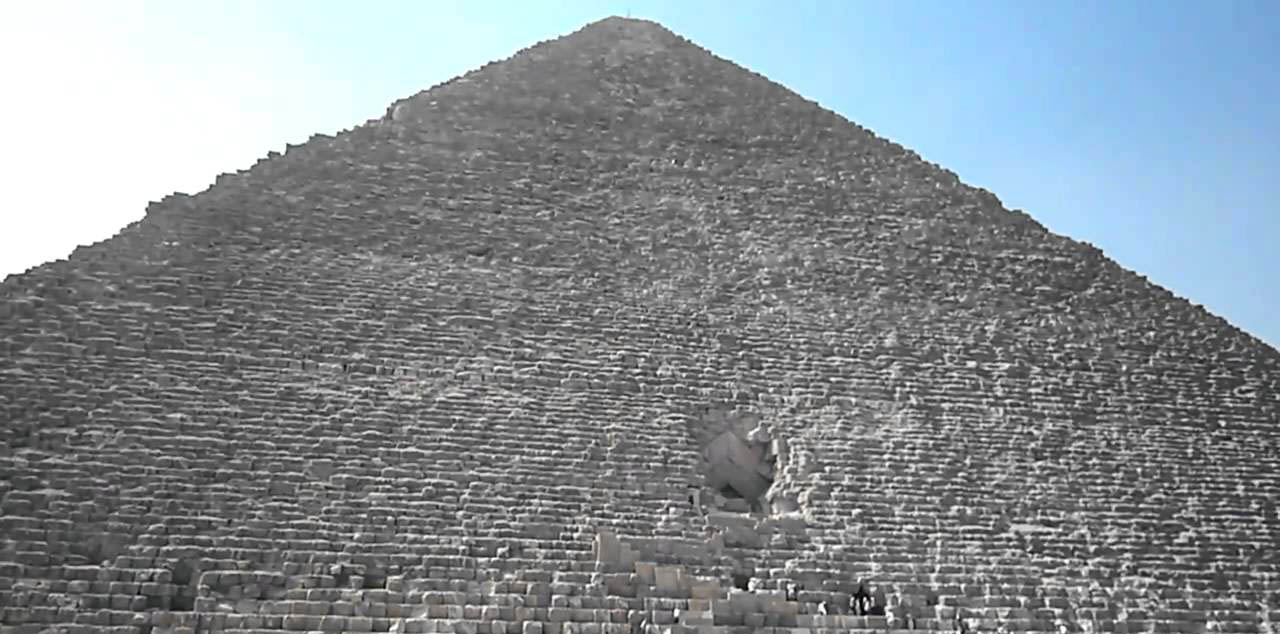


His full Egyptian name was Hnum-Khufu that means, ”protected by the Knum”.
He built a temple at Dendera, and perhaps in Koptos and Beni Hasani.
His most famous legacy is certainly Great pyramid in Giza, for which is believed that he himself made plans for construction. On that, area was also the capital; everything took place near Memphis, but the capital itself was never in that city. Pyramid remained intact until the year 820. AD, when the Arabs break into it.
They discovered three chambers (kings, queen, and underground) and the system of corridors that were connecting them. The granite sarcophagus, allegedly intended for the Pharaoh, was empty, which led to question the use itself of the pyramid as a tomb of the rulers. Observations of the positions of these three great pyramids and their relation towards the Nile led to the conclusion that pyramids mimic the arrangement of the stars in the constellation Orion (The constellation Orion Egyptians associated with the God Osiris) and their relationship to the Milky Way. This fact reminded many people of the Wiseman Hermes Trismegistus words, who said that the earthly Egypt is a picture of the heavenly Egypt. Herodotus speaks of the Cheops as a tyranny man who is using many slaves in order to build his pyramid. The only image for which historians believed to represent Cheops is this 5 cm high statuette made of ivory discovered by Briton Petrie.
Djedefre (Radjedef) (2.566 – 2.558)
He is Cheops’s son and heir to the throne and he is the first pharaoh who has the title
sa-re – son of the Sun. His pyramid remained unfinished.
Khafre (Kefren)(1.558 – 2.532)
There is a presumption that he is also Cheops son. He is an owner of the second pyramid in Giza.
Menkaure (Mikerin) (2.532 – 2.503)
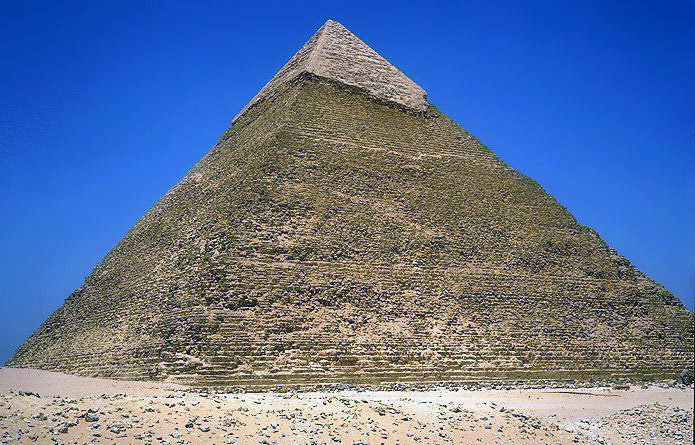


He is son of Kefren, the owner of the third great pyramid in Giza. Herodotus says that he was a bit milder ruler than his father was, and he tells the story of Menkaure. He says that Menkaure had raped his own daughter, and she after that committed suicide.
That is why Menkaure grieved. He grieved so much that he decided to make a tomb for his daughter in which he stored a statute of cow covered in gold. The Queen ordered to cut servants hands that were guarding the princess. The story goes that curse was cast on the Menkaure that he will die in six years, and he gave himself to drink and pleasures. When his sarcophagus people discovered, it was declared a masterpiece of that period, but it sunk near the Portuguese coast during transport to England.
Djedefre (?)
He ruled for eight years. He left in his legacy an unfinished pyramid at Abu Poashz. During his reign started dynasty struggles, this led eventually that Heliopolis priests took over the throne and founded V dynasty.
Shepseskaf (2.503 – 2.498)
He raised southern porch of the Ptah’s temple in Memphis and he completed Menkaure’s pyramid. He built himself huge mastaba instead of the pyramid. It is considered that this indicates to the fall of the ruler’s power. In 1925. next to great pyramid it was discovered a tomb that belonged to Queen Hotep-heres who was wife of Pharaoh Sneferu and she was Cheops mother.
FIFTH DYNASTY (2.494 – 2.345)
Connection between two dynasties could be the queen Hentkaues. Small pyramid in Giza belongs to her. Her pyramid historians sometimes calledthe fourth pyramid because it is next to the other pyramids in Giza between the entry paths.
There is an assumption that Userkaf married Hentkaues and therefore founded a new dynasty. Hentkaues was Shepseskaf’s mother and Menkaure’s daughter. It is more likely that the change to the throne passedwith many problems. Userkaf, Sahure and Noferirkare were the trio that “Ra had with the wife of his priest in Heliopolis.” They tore down the IV. Dynasty. In that way the God Ra became a dynastic God instead of Horus. However, the Pharaoh himself was no longer fully equated with the Gods – he became subjected to the Rau.
Userkaf (2.494 – 2.487)
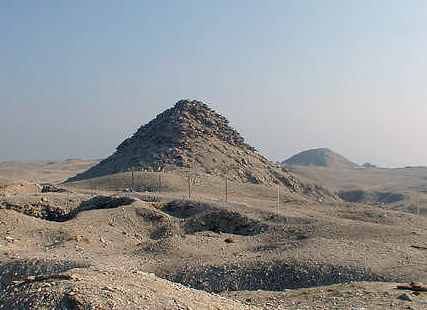


According to some legends, Userkaf was son of the Sun god, then also son of the Heliopolis priest Djedefre, then high priest in Heliopolis, etc. It is a fact that during this period there was a strong influence of the solar cult and its center; city Heliopolis. Temples to the Sun and many other temples were built. Pharaoh Userkaf built his pyramid at Saqqara. At this time, there was a gradual increase of the nobility’s power, which will be one of the causes of unexplained fall of the Old Kingdom.
Sahure (2487. – 2475.)
He fought against Libyans and he led expedition to Feniqio.
Neferirkare, Shepseskare, Neferefra, Niuserra, Menkauhor, Isesi (Djedkara), Unis
Besides Sahure’s battles, kings were launching expeditions also to the east. From this time, a ruler entitles right for the construction of mastaba to the high officials, and for reward ruler gives land, which becomes inherited property. This is how royal property reduced, and created noble estates where the labor forces were peasants and slaves. All this implied on to a political awareness and strengthening of the nobility that eventually led to the fall of the Old Kingdom.
SIXTH DYNASTY (2345. – 2181.)
Sixth Dynasty is made out of six rulers that ruled from Memphis. Tombs of the rulers were built at Saqqara. The transition from the V. to the VI. Dynasty possibly occurred through Unis’s daughters and Teti’s wife Iput because Unis did not have male heir. From this period, also authority over Nome’s becomes inherited (nomarh). All this had lead to weakening of the central government VII. and VIII. Dynasty.
Teti I (2.345 – 2.323)
His vizier, governor Mereruka, was owner of the largest and most beautiful mastaba in Egypt. In contrast to relief of esoteric contents in the Pharaoh tombs, reliefs in the mastaba were filled with scenes from the life that greatly helped in the research of the life back then.
Teti freed of taxes domains that belonged to the temple in Abydos. His guards killed him.
Userkare (2.323 – 2.321)
Only was known from the Kings list at Abydos with two stamps, and probably was ruled as an assistant to the queen Iput in Regency of juvenile successor Pepi I.
Pepi I Meryre (2.321 – 2.287)
He ruled for 33 years, and according to the Manetho, one of his guards killed him. However, he still managed to expand its power to the II cataract. Historians named the complex of Pepi’s pyramids Men-nofer Pepi, which means ‘Pepi’s everlasting beauty’. It gave, in antics, Greek’s name to the town, which Egyptians called White Wall, which was Memphis.
Pepi sent expeditions to Asia and Nubia, but he married two daughters of the provincial tribe Kuija. This indicates to a strengthening of the nobility, and the weakening of the king’s power.
Merenre I (2.287 – 2.278)
He was Pepi’s son; he reigned only five years.
Pepi II (2.278 – 2.184)
To this ruler Manetho and Turin Canon gave more than ninety years of rule. Historians believedthat in the beginning he was a co-ruler with his mother because he succeeded his brother when he was only six years old. He was the last powerful ruler of the Old Kingdom.
Queen Nitocris (Nitikret) (2.184 – 2.181)
Pepi II was succeeded by the four pharaohs. Historians know very little about the reign of these pharaohs. Turin Canon mentioned eight pharaohs, but only four names were saved while other four remained damaged. One of them was his brother Merenre II. There are more documents only about the queen Nitocris (Merenre’s wife and sister). Manetho mentioned her as “the noblest and most beautiful woman of the time” while Herodotus tells the story of her revenge on the murderers of her brother which she hosted at the banquet and then suffocated them with the flowers that was falling on them.
Noble Unis (Unas)
From this period it was important his biography written on the walls of his tomb at Abydos. He started his career during reign of Teti I. Later, he gained many awards and titles so that for the Pepi I, although he could have already been 60 years old, he became the governor of Upper Egypt.
